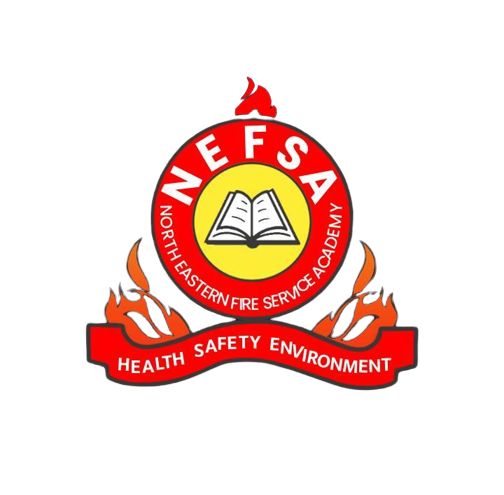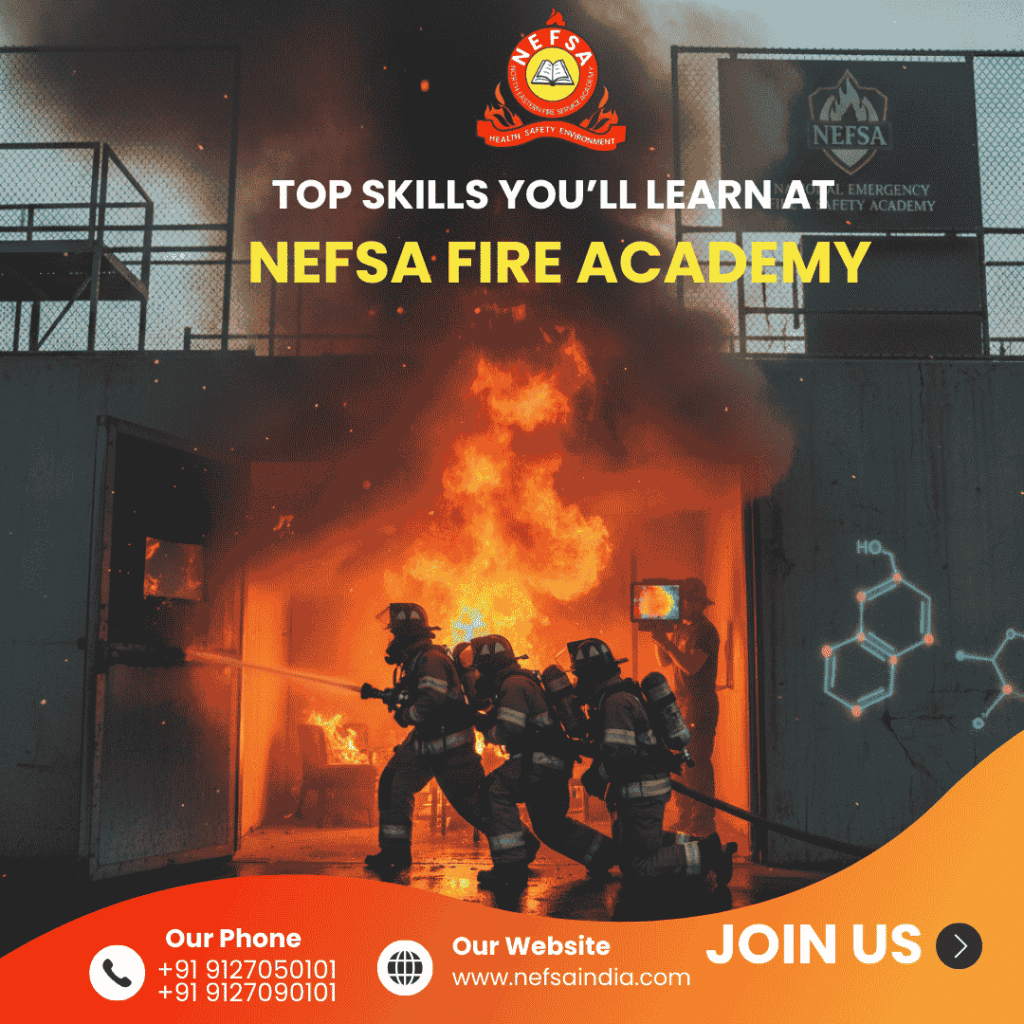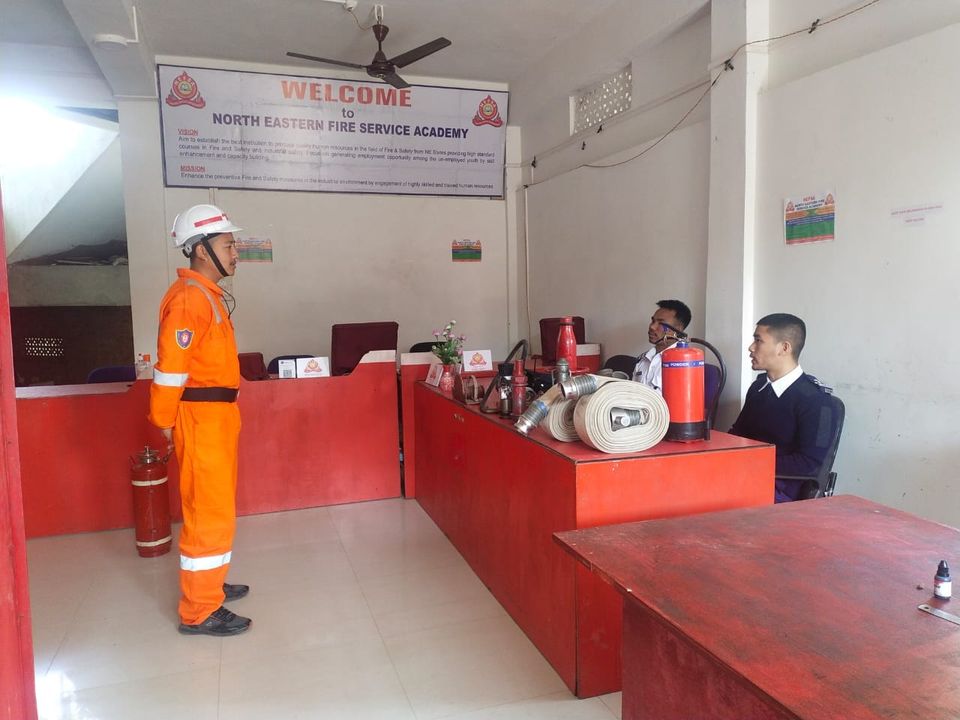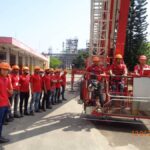Fire is one of humanity’s oldest tools — and one of its most dangerous hazards. For firefighters and safety professionals, understanding why fire behaves the way it does is critical to fighting it safely and effectively. This NEFSA guide breaks down the essential science behind fire and combustion in a practical, training-ready way.
1. What is fire? The fire triangle and beyond
At its simplest, fire is a sustained chemical reaction between a fuel and an oxidizer that releases heat and light. Firefighters are taught the fire triangle — fuel, heat, and oxygen — as a way to visualize what a fire needs to exist. Remove any one side and the fire will be suppressed. Modern fire science often expands this into a fire tetrahedron, which adds the role of chemical chain reactions (the self-sustaining radical reactions in flames) as a fourth component.
2. Combustion chemistry — radicals, chains, and heat release
Combustion is not a single step but a complex sequence of chemical reactions. Most hydrocarbon fuels burn through chain reactions that create reactive radicals (like H·, OH·) which propagate rapid oxidation. The reaction needs initial energy (ignition) to overcome electronic or molecular barriers; once started, the exothermic reactions produce heat that sustains further reaction. The flame you see is a narrow reaction zone where fuel, oxygen, heat, and radicals meet. Understanding this micro-chemistry helps explain why certain fuels burn faster or hotter.
3. Types of combustion and why completeness matters
-
Complete combustion (ideal oxygen supply) produces mostly CO₂ and H₂O and releases maximum energy.
-
Incomplete combustion (limited oxygen or poor mixing) generates carbon monoxide (CO), soot, polycyclic aromatic hydrocarbons (PAHs), and other toxic by-products. These products pose major health risks and reduce energy release efficiency. In enclosed fires or smoldering conditions, incomplete combustion dominates and creates lethal smoke hazards.
4. Fire behavior in compartments: ventilation, fuel, geometry
Fire development depends strongly on environment. In compartments (rooms, vehicles), ventilation (air flow), fuel type/quantity, and compartment geometry (ceiling height, volume) determine how a fire grows, whether it becomes ventilation-limited, and how quickly temperatures rise. A small, well-ventilated gas fire behaves very differently from a ventilation-limited, fuel-rich room fire. These dynamics are essential for making tactical decisions on ventilation and entry.
5. Rapid fire progression: flashover and backdraft
Two life-threatening phenomena every firefighter must know:
-
Flashover — near-simultaneous ignition of most combustible surfaces in a compartment when thermal radiation feedback drives temperatures high enough. This is temperature-driven and can happen very quickly once the upper layer becomes saturated with heat.
-
Backdraft — an explosion-like ignition of accumulated hot, fuel-rich gases when oxygen is suddenly introduced (for example opening a door or window). Backdrafts are ventilation/pressure-driven and are particularly dangerous because they occur without the same temperature cues as flashover. Recognizing signs — smoke behavior, pressurization, and ventilation history — can prevent tragic outcomes.
6. Smoke and combustion by-products — the invisible killers
Most fire deaths are caused by smoke inhalation, not burns. Smoke contains particulate matter, carbon monoxide, hydrogen cyanide (in some materials), aldehydes, PAHs, and other toxicants. These can cause respiratory irritation, central nervous system depression, and rapid incapacitation — often before thermal effects become critical. Understanding which materials are burning helps predict likely toxicants (e.g., plastics produce cyanide and aldehydes). Proper SCBA use and ventilation tactics are lifesaving.
7. Practical takeaways for firefighters & safety pros
-
Control the triangle: cooling (water) removes heat; isolation removes fuel; and ventilation management controls oxygen. Each tactic must be matched to fire stage and compartment dynamics.
-
Watch smoke indicators: color, density, and velocity of smoke give clues about ventilation status and backdraft risk.
-
Respect rapid progression: compartment fires can transition to flashover quickly — maintain situational awareness, thermal readings, and safe egress routes.
-
Protect from smoke: prioritize SCBA and evacuation planning; post-fire atmospheric monitoring is important for residual toxicants.
8. How NEFSA trains you differently
NEFSA’s training blends foundational science with realistic scenario work. We teach chemical fundamentals (so trainees understand why tactics work), practical compartment fire behavior, and hands-on exercises that simulate flashover, backdraft cues, and smoke-driven decision making. Our aim: safer, faster, and more confident crews.
Conclusion
Want hands-on training that pairs the science of combustion with real-world firefighting tactics? Enroll in NEFSA’s Fire Dynamics & Compartment Fire Behavior course and learn to read fires like a scientist and fight them like a pro.
Contact us today to know more about admissions, batch schedules, and course details.
Visit: www.nefsaindia.com
Location: Dibrugarh, Assam
For More Blogs:- Click here







